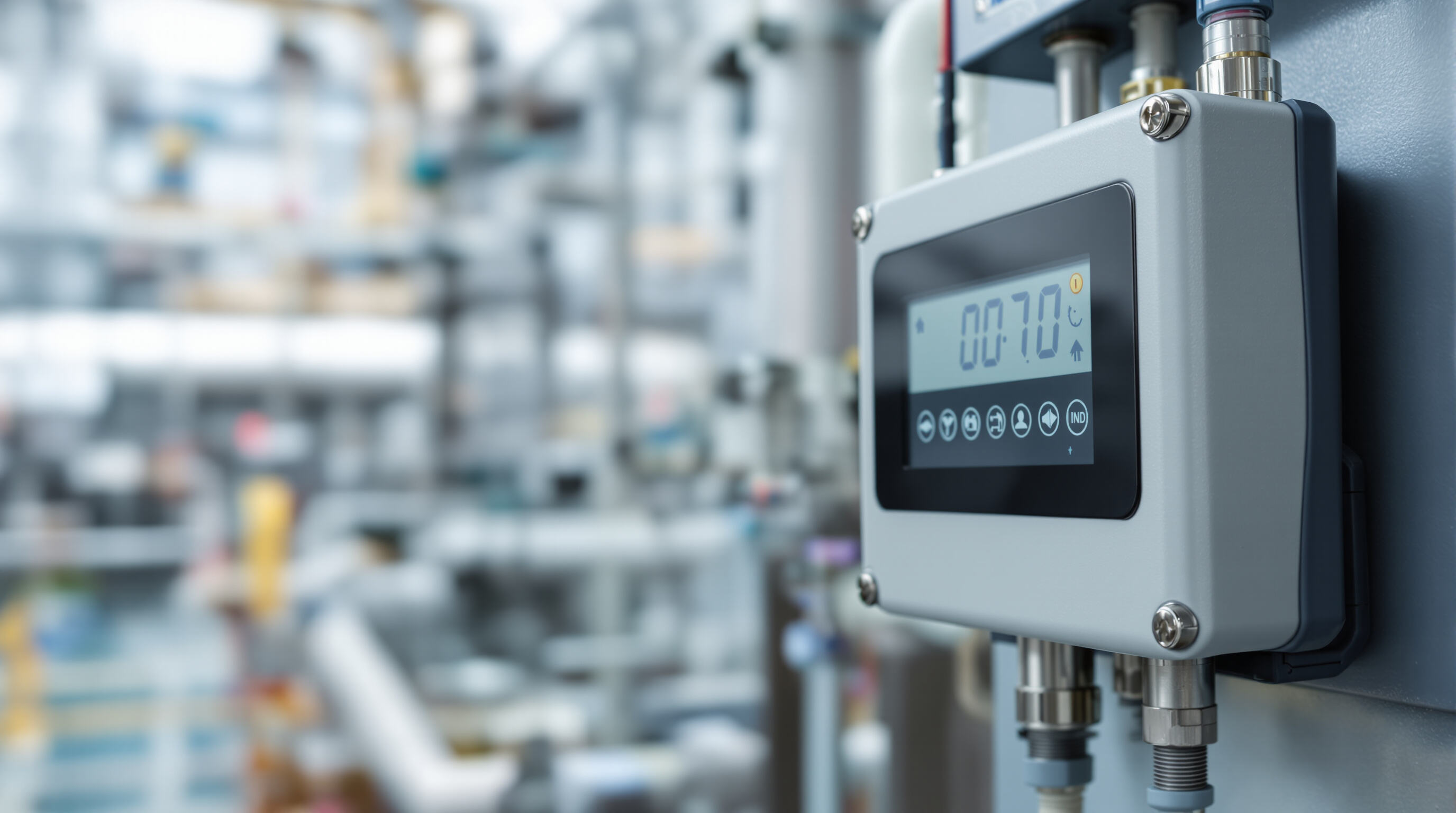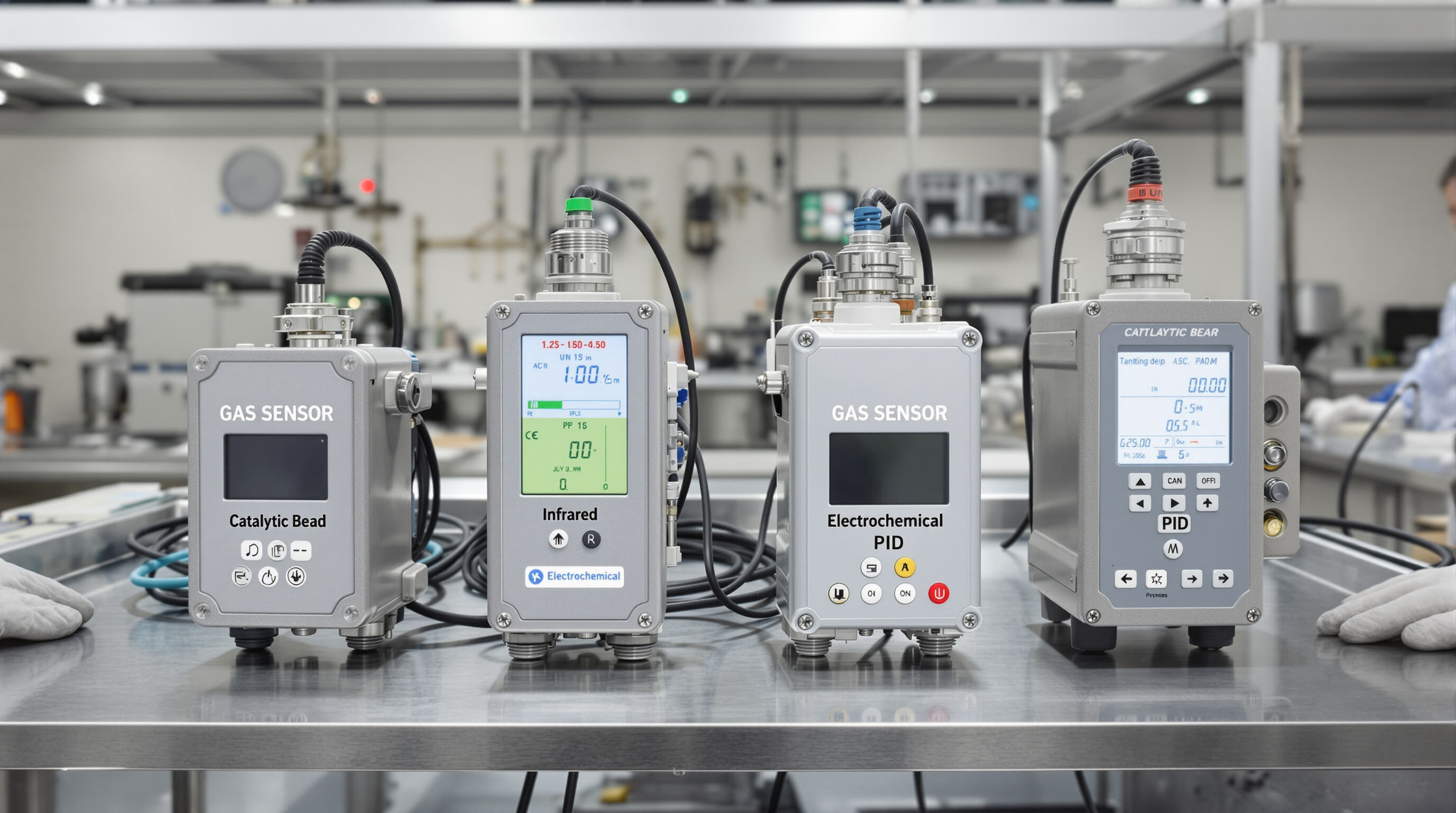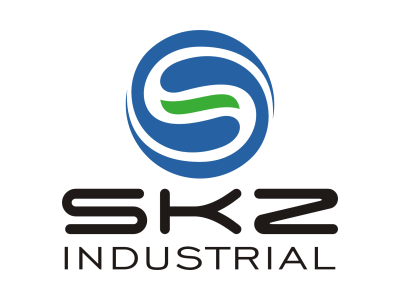Accuracy and Reliability in Gas Detector

Industrial gas detectors form the first line of defense against unseen hazards, making measurement accuracy non-negotiable. A 2018 U.S. Chemical Safety Board report found that 37% of gas-related incidents stemmed from detector inaccuracies or delayed responses. Modern devices achieve ±2% full-scale accuracy through advanced sensor architectures and self-diagnostic algorithms.
How Accuracy Impacts Safety and Efficiency in Industrial Gas Detection
Getting accurate readings from gas detectors really matters because it stops disasters such as explosions at petrochemical plants and also helps improve how well furnaces burn fuel. When operators keep oxygen levels close to their target values (within about 0.1%), they actually save money on fuel expenses somewhere around 12% each year according to what we've seen across different sites. For workers entering tight spaces, having detectors that can spot even tiny amounts of dangerous gases like hydrogen sulfide makes all the difference between safe operations and unnecessary panic drills. These instruments need enough sensitivity but not so much that every little fluctuation sends everyone running out.
Key Factors Influencing Measurement Reliability Under Variable Conditions
Four environmental variables critically impact gas detector performance:
| Variable | Impact Range | Mitigation Technology |
|---|---|---|
| Temperature | -40°C to 70°C | Active thermal compensation |
| Humidity | 15-95% RH | Hydrophobic sensor membranes |
| Pressure | 500-1500 mbar | Differential pressure sensors |
| Cross-interferents | Varies by gas | Laser-based NDIR systems |
Field studies show that combining electrochemical sensors with infrared backup reduces false alarms by 68% in volatile organic compound (VOC) rich environments.
Advancements in Sensor Calibration for Long-Term Performance Stability
Modern gas detectors employ predictive maintenance algorithms that analyze calibration drift patterns. The 2023 Journal of Hazardous Materials study demonstrated that automated calibration protocols extend sensor lifespan by 40% compared to manual methods. Wireless calibration stations now enable fleet-wide adjustments in under 15 minutes, reducing downtime by 83% in oil refinery applications.
Case Study: Consequences of Inaccurate Readings in Chemical Processing
One specialty chemical plant kept running into problems measuring ethylene oxide levels because their old catalytic bead sensors just weren't cutting it anymore. For almost two years straight, these tiny but dangerous spikes between 15 and 20 parts per million went unnoticed until they started causing serious issues. The result? A staggering $2.3 million loss from damaged catalysts and lost production time across that period. Looking back at what happened, engineers found out that switching to photoionization detectors instead could have made all the difference. These newer PIDs offer much better precision around plus or minus half a part per million. Had they been installed earlier, most experts believe roughly 9 out of every 10 incidents might have been caught before they caused major damage, allowing operators to tweak processes in real time when needed.
Sensor Technologies and Application-Specific Matching

Overview of Catalytic Bead, Infrared, Electrochemical, and PID Sensors
Industrial gas detection systems typically work with around four main sensor technologies, each offering different strengths depending on what needs monitoring. The catalytic bead or CAT sensors are pretty good at spotting flammable gases like methane because they measure temperature changes when oxidation happens. Then there's infrared sensors which look at how light gets absorbed by hydrocarbons, making them great for finding leaks without needing constant recalibration. Electrochemical sensors take things down to parts per million levels for dangerous stuff like carbon monoxide. Meanwhile, PID sensors, short for Photoionization Detection, excel at catching those tricky volatile organic compounds (VOCs) quickly. Some recent testing from last year showed interesting results too. In real world conditions with dust floating around, IR sensors stayed accurate about 98% of the time versus only 82% for electrochemical ones. That kind of gap makes a big difference when safety is on the line, so picking the right sensor tech really matters for actual operations.
Selecting the Right Sensor Type Based on Target Gases and Environment
The effectiveness of gas detectors really comes down to matching what the sensors can do with what's actually needed on site. Refineries that need to watch for hydrogen sulfide typically go with electrochemical sensors since they work well at detecting levels under 10 ppm. On the other hand, when pharmaceutical companies are dealing with solvent vapors, they tend to favor PID sensors because these cover a wider range of volatile organic compounds. Weather conditions matter too. High humidity or extreme temperatures can affect performance significantly. For instance, IR sensors generally perform better than CAT sensors in places where there's not much oxygen around. And if vibration is a concern, solid state designs hold up much better compared to those old fashioned membrane based electrochemical units that everyone seems to be moving away from nowadays.
Addressing Cross-Sensitivity and Lifespan Trade-Offs in Gas Detectors
Sensor tech always comes with tradeoffs somewhere along the line. Take electrochemical detectors for instance they typically run about two to three years before needing replacement, but these sensors can get confused when different gases are present at the same time, especially stuff like nitrogen dioxide mixing with chlorine. Catalytic bead sensors tend to last much longer, often five years or more, which sounds great until you remember they need regular calibration checks every month in places where chemicals react strongly. The newer multi spectral infrared models are changing things though. These sensors look at eight or more different absorption points instead of just one wavelength, which means fewer false alarms overall. Early tests in 2023 showed around a 70 percent drop in those pesky cross sensitivity problems compared to older versions. Makes sense why manufacturers are starting to take notice.
Future-Proofing with Modular and Expandable Sensor Platforms
Top equipment makers are starting to roll out gas detection systems that come with interchangeable sensor modules these days. Facilities can swap out components when facing new hazards instead of buying whole new units. Take for instance a setup where an infrared methane sensor stays put while other slots get swapped in temporarily for volatile organic compound monitoring during those tank cleaning operations. The savings add up too – companies report around 40% lower upfront expenses versus traditional single gas detectors based on recent cost studies from last year. And looking ahead, newer models will include wireless calibration options that make it much easier to tweak configurations throughout large sensor networks spread across different locations.
Calibration Needs and Maintenance Efficiency
Optimal Calibration Frequency for Minimizing Downtime
Most industrial gas detectors need calibration somewhere between three to six months normally, but when dealing with VOCs or really harsh temperature environments, some facilities end up adjusting them once a month instead. According to research from the Ponemon Institute last year, about one third of all unexpected shutdowns at chemical plants were traced back to bad calibration practices, costing companies around seven hundred forty thousand dollars each year in lost production time. Companies that switch to calibration schedules based on actual risk rather than sticking strictly to calendar dates see roughly a 28% drop in these unplanned outages. This approach makes more sense because it matches maintenance needs with how equipment actually wears down over time and what kind of gas exposures workers face day to day.
Field Calibration: Tools, Automation, and Ease of Use
Today's field calibration kits bring together automated span gas injection and Bluetooth validation software, which cuts down on calibration time roughly two thirds compared to doing it all manually. The main components are those portable reference gas cylinders that come with proper NIST certification, along with automated bump testers that check sensors before shifts start, plus those tough little tablets that walk users through the whole calibration process step by step. Looking at what's new lately, we see detectors connected to the internet now kick off their own calibration whenever sensors start drifting outside that +/- 2% range. This has made a real difference in field settings where mistakes used to happen about four times out of ten cases.
Leveraging Predictive Maintenance to Extend Gas Detector Uptime
Predictive algorithms analyzing calibration drift rates and environmental stressors now forecast sensor lifespans with 89% accuracy, enabling just-in-time replacements. Facilities implementing these systems achieve 92% detector availability—a 23% higher rate than reactive maintenance approaches—while cutting annual calibration costs by $18k per device according to 2024 operational data.
Response Time and Measurement Range Performance
Why fast response time is critical in emergency and confined space scenarios
Industrial gas detectors with sub-5-second response times reduce evacuation delays by 60% in hydrogen sulfide leaks compared to slower models (Occupational Safety Journal 2023). In confined spaces like tanks or tunnels, delayed readings risk suffocation or combustion—photoionization detectors (PIDs) resolve this with <3-second alerts for volatile organic compounds.
Balancing wide detection range with high sensitivity
Modern analyzers achieve 0.1–10,000 ppm ranges without compromising sensitivity through adaptive signal filtering. For example, methane detectors maintain ±2% accuracy across 0–100% LEL (lower explosive limit) while identifying 5 ppm leaks during maintenance—critical for preventing ignition in oil refineries.
Trend: Real-time monitoring integration for enhanced situational awareness
IoT-enabled gas detectors now sync with centralized safety systems, slashing incident response times by 30% through instant SMS/email alerts. Cloud-based analytics further predict sensor drift, cutting calibration downtime by 45% compared to manual schedules (2024 Industrial Automation Report).
Key Comparisons: Sensor Response Times
| Technology | Avg. Response | Best For |
|---|---|---|
| Electrochemical | 20–30 sec | Fixed ammonia monitoring |
| Catalytic bead | <15 sec | Combustible gas zones |
| PID | <3 sec | Confined space emergencies |
This table clarifies trade-offs when selecting gas detectors for time-sensitive applications.
Connectivity, Data Management, and System Integration
Modern industrial gas detectors require seamless connectivity and robust data handling to meet evolving operational demands. These features enable real-time monitoring while simplifying compliance workflows and process optimization.
Wireless Connectivity (Bluetooth, NFC) for Remote Gas Detector Management
Technicians can now set up gas analyzers and pull diagnostic info remotely thanks to Bluetooth and NFC tech, which means they don't have to go into dangerous spots personally. This cuts down on risk for workers stuck in tight, potentially deadly spaces while also making maintenance work faster overall. The latest developments in industrial IoT connectivity are pretty impressive too. These new standards let data travel securely across both 5G and NB-IoT networks. Even places where radio signals usually struggle, such as deep underground tunnels or inside massive steel buildings, aren't stopping the communication anymore. The encryption keeps everything safe from interference or tampering during transmission.
Data Logging and Reporting for Compliance, Audits, and Traceability
When facilities implement automated data capture systems, they end up with solid records that can't be altered later on. These systems keep track of how gas concentrations change over time, when sensors were last calibrated, and whenever alarms go off. The real value comes from being able to create reports that meet OSHA 1910.146 requirements and IECEx standards right away during audits. Plants can also monitor parts per million level gas leaks throughout entire calendar years for their environmental impact statements. Another benefit is connecting sensor readings directly to equipment operation logs. This connection makes it easier to spot when maintenance should happen based on actual usage patterns rather than just guesswork.
Integrating Gas Analyzers with Fixed Sampling Systems and Plant Networks
When gas detectors work well with distributed control systems (DCS) and those PLC devices, they can actually kick off ventilation changes or shut down processes if dangerous levels get hit. The good news is that open protocols such as Modbus TCP and OPC UA make it much easier to hook everything together. And these edge computing gateways? They handle data right where it's collected instead of sending everything back to main servers, which keeps things running smoothly. Facilities managers will tell you this setup responds almost instantly, sometimes within fractions of a second, even when tracking over 50 different spots throughout big industrial sites. Makes sense why safety standards keep getting tighter around response times these days.
FAQ
- How important is accuracy in industrial gas detection systems? Accuracy is crucial in industrial gas detection as it helps prevent disasters and improves operational efficiency by maintaining optimal conditions.
- What are the key factors affecting measurement reliability? Temperature, humidity, pressure, and cross-interferents significantly impact measurement reliability.
- How does sensor calibration help in performance stability? Sensor calibration, especially automated processes, can extend sensor lifespan and minimize downtime.
- Why choose modular sensor platforms? Modular sensor platforms allow easy customization and cost savings by replacing only necessary components.
- What role does connectivity play in gas detection systems? Wireless connectivity enables remote management, enhances data security, and speeds up maintenance processes.

